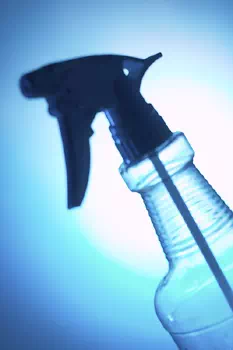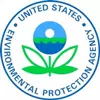 Waste Reduction— Chemicals
Waste Reduction— Chemicals
This section contains information on waste reduction for chemicals used at healthcare facilities, with a focus on:
- Regulatory Considerations
- Cleaning Chemicals
- Laboratory Chemicals
- Sterilants and Disinfectants (glutaraldehyde and ethylene oxide)
Although there are a number of regulations that may affect the use and disposal of specific chemicals, two particular sets of rules should be kept in mind for all chemicals:
- Most chemicals used in the workplace are covered by OSHA’s Hazard Communications Standard (HazCom). It establishes uniform requirements to make sure that the hazards of each of these chemicals are evaluated, and that this hazard information is transmitted to employers who deal with the chemicals and to employees who might be exposed to them. (see Hazard Communications Standard). Hazcom also covers chemical hazard labeling.
- Used or discarded chemicals may be regulated under EPA’s Resource Conservation and Recovery Act (RCRA) hazardous waste regulations (see RCRA). Among other rules, RCRA requires small and large quantity generators to take steps to reduce their waste.
Depending on the type of chemical, other regulations that may affect purchase, use and disposal of chemicals include:
- Federal Insecticide, Fungicide and Rodenticide Act (e.g., pesticides, sterilants, and disinfectants), and
- Toxic Substances Control Act (e.g., lead, PCBs, and asbestos)
Cleaning chemicals in common use at healthcare facilities fall into several product categories including:
- Air fresheners
- Bathroom and tile cleaners
- Dusting aids
- Fabric protectants
- Floor polishes/waxes
- Furniture maintenance products (aerosols)
- General purpose cleaners
- Glass cleaners
Waste reduction of cleaning chemicals can be achieved by purchasing less toxic chemicals in the first place and by improving the use of materials so that less chemical is used.
When purchasing cleaning chemicals, look for products that are certified to meet certain environmental and health and safety criteria. There are several accrediting bodies that make determinations about whether cleaning chemicals have met environmental criteria.
- Green Seal
- Canada’s Environmental Choice Program
- New American Dream
- State Programs
To improve use and handling of cleaning chemicals, consider the following:
- Ensure that employees:
- Use supplies only for their intended purpose
- Use only the amount necessary
- Have access to MSDS as required by OSHA rules.
- Provide transfer methods which prevent spills and quality problems:
- Gravity spigot or pump to dispense bulk liquid materials
- A spout and funnel for transferring liquids to different containers
- Control access to hazardous raw materials:
- Designate central personnel to distribute materials
- Limit access to employees trained in hazardous materials handling and who understand the importance of first-in first-out policy
- Keep records of when and why larger spills occurred in order to identify spill prevention opportunities and document related costs
The following pollution prevention measures will minimize the quantity of hazardous waste generated by your laboratory (source: Pollution Prevention Measures for Safer Laboratory Laboratories, EPA 908-F-06-002).
Chemical laboratory purchasing. Careful consideration should be given to purchasing chemicals for your laboratory to avoid common problem chemicals and excess stocks.
- If possible, centralize purchasing of your chemicals through one person.
- Create an authorized use list of those chemicals that can be purchased in the laboratory.
- Develop purchase guidelines, which include buying chemicals in the smallest quantities needed, or only a one to two-year supply.
- Select a chemical supplier who can deliver small amounts of chemicals and accept unopened chemicals that are returned, thereby supporting waste minimization efforts.
- Purchasing and using non-mercury-containing fixatives in the laboratory and technologies for vital sign monitoring (thermometers and sphygmomanometers) help to reduce mercury pollution.
- Remember that a chemical’s true cost includes the purchase price plus the cost of proper disposal.
Maintain a chemical inventory. Inventories enable you to determine the existence of a specific chemical, its location, and approximate shelf age, thus helping to control the hazards in your laboratory.
- Maintain a complete and current inventory of all chemicals, including location, chemical names, amounts, and dates of entrance to your laboratory
- Update the inventory when chemicals are purchased or used up, and inventory your entire stock at least once a year
- Establish a policy for restricting the acceptance of donated chemicals unless they meet a specific need during a defined period of time (preferably within a year)
- If your regulatory authority has a list of prohibited and or restricted chemicals, ensure that these materials are not purchased
- Consider obtaining needed chemicals from another laboratory that may not need them or has them in excess
- Ensure your chemical supplier provides you an MSDS for every chemical that is purchased, and that it is maintained in the laboratory files
Storing laboratory chemicals. By understanding and following these guidelines and precautions, you can ensure that your laboratory’s chemical storage area is safe for use.
- Designate a safe and secure area for chemical storage. This will provide an area that reduces the risks of breakage and spills. It is recommended that the storage area be ventilated, locked, and fire-resistant.
- Limit access to your chemical storage areas to authorized personnel only.
- Keep chemicals in the storage area except when in use.
- Keep chemical storage areas clean and orderly at all times.
- Post signs for hazardous chemical storage.
- Store chemicals in containers designed for chemical storage and appropriate for each type of chemical; ensure that lids are tight.
- Label all chemicals to assure proper identification.
- Store chemicals at or below eye level.
- Store chemicals by chemical group (chemical class/reactive group) to keep incompatible chemicals away from each other. Make sure your organization ensures vertical and horizontal compatibility, as well as compliance with the local fire code. Appropriate measures may include separation by shelving, and or the use of secondary containment such as clean tubs, buckets, and trays. The following provides some general guidelines for storage:
- Keep acids separate from bases
- Keep organic acids separate from inorganic acids (nitric acid from formic acid, acetic acid, and anhydrides)
- Keep ignitables separate from oxidizers or sources of ignition, especially solvents
- Keep flammable liquids separate from corrosives (except acetic acid – store with flammables)
- Keep pyrophorics separate from flammables and corrosives
- Keep oxidizing agents separate from reducing agents
- Keep halogenated solvents separate from non-halogenated solvents
- Keep water reactives separate from aqueous sources
- Check chemical containers for the formation of peroxides. In glass bottles, peroxides may be visible as distinct crystals; in metal cans, particularly deteriorating ones, peroxidation should be presumed. These materials are highly explosive, and should be handled with extreme caution by qualified individuals, such as fire department personnel. Peroxide-forming chemicals should be stored in sealed, airtight containers with tight-fitting caps, and checked periodically for peroxide formation.
- Do not use standard refrigerators to store flammable chemicals; only refrigerators of explosion-proof or explosion-safe design should be used.
- Do not store food in chemical-containing refrigerators; label these refrigerators with signs that say “no food allowed.”
- Keep current material safety data sheets (MSDSs) for every chemical that is being stored in order to understand storage requirements, hazardous characteristics, and health and safety information.
- Follow instructions for recommended shelf-lives of chemicals, since chemicals can become more hazardous with age.
- Eliminate from storage all chemicals that are beyond their shelf life, that are unusable, unneeded, deteriorated, and or excess.
- Check chemical containers periodically for rust, corrosion, and leakage.
Sterilants and disinfectants kill living organisms. They need that essential property to perform their basic function. But "desirable" organisms (like us, presumably), and "undesirable" organisms, like disease-causing pathogens, are not that different at the cellular level, where their basic metabolic processes are concerned. If a substance is toxic to pathogens, chances are it will also be harmful to other organisms.
While all sterilants and disinfectants are toxic to some degree, some have greater killing power than others. High toxicity is an advantage in critical applications, where the risk of infection must be reduced to the lowest possible level. But the greater effectiveness of highly toxic materials comes at a price:
- the risk of harm to staff and patients through inadvertent exposure will be greater
- the disposal of wastes from disinfection processes may become more difficult and costly
Healthcare professionals have developed two interrelated classification systems to help determine appropriate infection control materials for various clinical situations. One system is concerned with classifying levels of infection risk -- in other words, with providing "how clean is clean?" guidelines based on plausible exposure risks. The other system is concerned with classifying levels of effective potency of disinfection materials. Using the two systems, you can match the material with the need, and ensure a safe level of infection control without overkill -- i.e. without overusing materials that pose needless risks of their own, and increase your costs as well.
For information on choosing the appropriate material to match risk with potency and alternatives to glutaraldehyde and ethylene oxide see Sterilants and Disinfectants in Healthcare Facilities.



